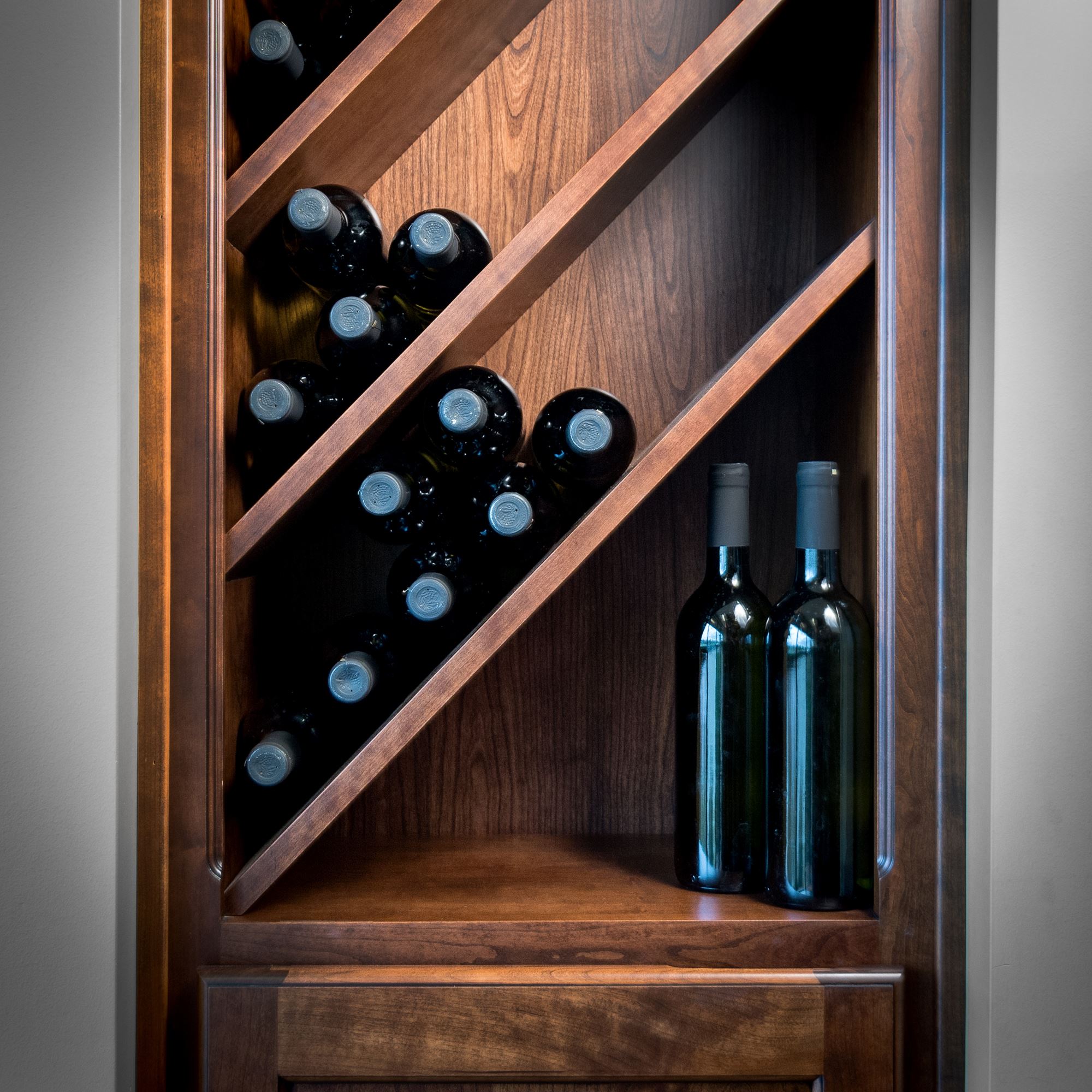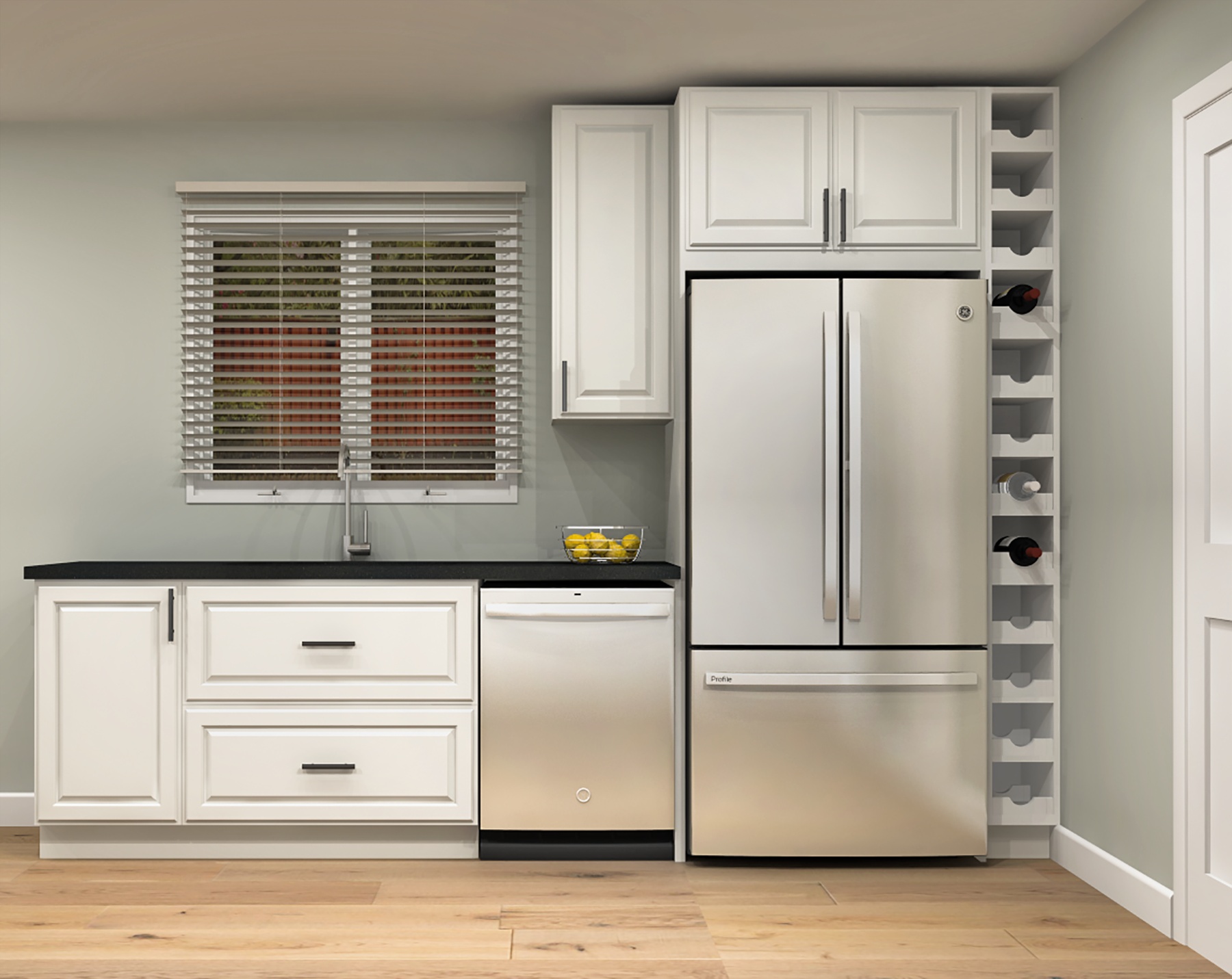Types of Base Cabinet Wine Racks

Base cabinet wine racks offer a convenient and space-saving solution for storing wine bottles within the kitchen or bar area. The choice of rack depends on factors such as available space, budget, aesthetic preferences, and the desired storage capacity. A careful consideration of the various materials, designs, and functionalities is crucial for selecting the optimal wine rack.
Materials Used in Base Cabinet Wine Racks
The material of a base cabinet wine rack significantly impacts its durability, cost, and aesthetic appeal. Common materials include wood, metal, acrylic, and combinations thereof. Each offers distinct advantages and disadvantages.
| Material | Durability | Cost | Aesthetic Appeal |
|---|---|---|---|
| Wood | High; durable and long-lasting with proper care. Susceptible to moisture damage. | Medium to High; varies greatly depending on wood type and finish. | Classic and elegant; can complement various kitchen styles. Offers a warm and natural feel. |
| Metal (Steel, Iron) | High; resistant to damage and moisture. Can rust if not properly treated. | Medium; generally less expensive than high-end wood options. | Modern and industrial; can create a sleek and contemporary look. Variety of finishes available. |
| Acrylic | Medium; relatively durable but can scratch. | Low to Medium; generally more affordable than wood or metal. | Clean and modern; allows for visibility of wine bottles. Can appear less substantial than wood or metal. |
Designs and Styles of Base Cabinet Wine Racks
Base cabinet wine racks are available in a wide array of designs and styles to accommodate various needs and preferences. Careful consideration of the available space and desired storage capacity is paramount in selecting the appropriate design.
The following are examples of common designs:
- Single-tier racks: These offer simple, straightforward storage, ideal for smaller collections or spaces with limited depth. They are often the most cost-effective option.
- Multi-tier racks: These maximize vertical space, allowing for significantly increased storage capacity within a smaller footprint. They are suitable for larger collections and can be more complex to install.
- Pull-out racks: These slide out from the cabinet, providing easy access to all bottles. They are particularly convenient for base cabinets that are difficult to reach. They generally have higher cost than fixed racks.
- Rotating racks: These allow for 360-degree rotation, offering complete visibility and access to all stored bottles. They are typically more expensive and require more space.
Storage Capacity and Functionality of Base Cabinet Wine Rack Designs
The storage capacity and functionality of a base cabinet wine rack are directly related to its design and dimensions. Single-tier racks offer limited capacity, while multi-tier racks significantly increase storage. Pull-out and rotating racks enhance functionality by improving access to bottles. For instance, a pull-out rack in a deep base cabinet allows easy access to bottles stored at the back, whereas a fixed multi-tier rack may require more effort to reach the lower tiers. The optimal design depends on the size of the wine collection and the frequency with which the wine is accessed. A large collection might necessitate a multi-tier or pull-out rack, while a smaller collection may be adequately served by a single-tier or simpler design.
Installation and Integration

Installing a base cabinet wine rack requires careful planning and execution to ensure a secure and aesthetically pleasing result. Successful integration depends on accurate measurements, appropriate tools, and a keen eye for design harmony within your existing kitchen aesthetic. Improper installation can lead to instability, damage to cabinets, or a visually jarring effect.
Base cabinet wine rack – The process, while manageable for DIY enthusiasts, requires attention to detail. A poorly installed rack not only risks damaging your wine bottles but can also compromise the structural integrity of your cabinetry.
Base Cabinet Wine Rack Installation Steps
The following steps provide a general guideline. Specific steps may vary depending on the type of wine rack and cabinet construction. Always consult the manufacturer’s instructions for your specific model.
- Measure and Plan: Accurately measure the available space within your base cabinet. Consider the dimensions of the wine rack, including its depth, width, and height, to ensure a proper fit. Account for any existing cabinet features that might interfere with installation.
- Gather Tools: Assemble the necessary tools, including a measuring tape, level, pencil, drill, screwdriver (possibly various types depending on the rack’s fastening system), wood screws (if needed), and possibly a stud finder to locate wall studs for added support if the rack is particularly heavy.
- Prepare the Cabinet: If necessary, clear out the cabinet interior to provide ample working space. Remove any existing shelving that might conflict with the wine rack’s placement.
- Install the Wine Rack: Carefully follow the manufacturer’s instructions for installing the wine rack. This typically involves attaching the rack to the cabinet’s interior using screws or other fastening mechanisms. Ensure the rack is level and securely fastened.
- Test and Adjust: After installation, test the rack’s stability by gently placing a few bottles of wine inside. Make any necessary adjustments to ensure the rack is secure and level.
Integrating Base Cabinet Wine Racks into Different Kitchen Styles
Seamless integration is key to a visually appealing and functional kitchen. The style of your wine rack should complement your overall kitchen design.
Modern kitchens often benefit from sleek, minimalist wine racks made of stainless steel or glass. Consider a built-in rack that integrates seamlessly into the cabinet’s design.
Rustic kitchens pair well with wooden wine racks that have a distressed or reclaimed look. Opt for racks with visible wood grain and a natural finish to enhance the overall aesthetic.
Traditional kitchens benefit from more ornate wine racks that complement existing cabinetry and hardware. Consider racks made of dark wood or metal with decorative elements.
Base Cabinet Wine Rack Installation in a Farmhouse Kitchen
Imagine a charming farmhouse kitchen, painted in a soft cream color, with white shaker-style cabinets and butcher block countertops. A rustic, wooden wine rack, perhaps crafted from reclaimed barn wood, is installed in a base cabinet near the sink. The rack’s natural wood grain complements the butcher block countertop and adds a touch of warmth. The rack is securely fastened to the cabinet’s interior using sturdy screws, ensuring stability and preventing any wobbling. Its slightly distressed finish adds to the overall farmhouse aesthetic, seamlessly integrating with the existing design elements. The visible wood grain provides a natural contrast against the cream-colored cabinets, creating a visually appealing focal point within the cabinet. The installation is discreet yet functional, showcasing the wine bottles while maintaining the kitchen’s overall rustic charm. The bottles themselves become a part of the kitchen’s decorative scheme, adding to the welcoming and homely atmosphere.
Maintenance and Care: Base Cabinet Wine Rack

Proper maintenance is crucial for preserving the longevity and functionality of your base cabinet wine rack, ensuring your wine collection remains in optimal condition. Neglecting care can lead to damage, instability, and potentially affect the quality of your stored wine. This section details cleaning methods, preventative measures, and solutions for common problems.
Cleaning and Maintaining Different Wine Rack Types
The cleaning and maintenance procedures vary slightly depending on the material of your base cabinet wine rack. Understanding these differences is key to preventing damage and maintaining a pristine storage environment.
- Wooden Wine Racks: Dust regularly with a soft cloth or feather duster. For deeper cleaning, use a damp (not wet) cloth with a mild wood cleaner or a solution of warm water and mild dish soap. Always dry thoroughly to prevent warping or damage. Avoid harsh chemicals or abrasive cleaners. Periodically apply a wood conditioner to maintain the finish and protect against dryness.
- Metal Wine Racks: Metal racks are generally easy to clean. Wipe down with a damp cloth and mild detergent. For stubborn stains, use a non-abrasive cleaner specifically designed for metal. Dry thoroughly to prevent rust or corrosion. Regularly inspect for any signs of rust and treat promptly with a rust remover if necessary.
- Acrylic Wine Racks: Acrylic racks are relatively low-maintenance. Clean with a soft cloth and mild dish soap and water. Avoid harsh chemicals and abrasive cleaners, as these can scratch the surface. For fingerprints or smudges, use a glass cleaner. Dry thoroughly.
Environmental Factors and Wine Storage
Temperature and humidity significantly impact wine quality. Base cabinet wine racks, while offering a degree of protection, are susceptible to fluctuations in these factors.
Temperature fluctuations can cause premature aging or spoilage. Ideal wine storage temperature is typically between 55°F and 60°F (13°C and 15°C). High humidity can lead to mold and label damage, while low humidity can cause cork shrinkage and potential leakage. Maintaining consistent temperature and humidity levels within the cabinet is vital. Solutions include using a wine refrigerator specifically designed for base cabinets or installing a climate control system within the cabinet itself. Consider placing a hygrometer (humidity gauge) and thermometer inside the cabinet to monitor conditions.
Troubleshooting Common Problems
Addressing common issues proactively can extend the life of your wine rack and maintain its functionality.
- Wobbly Racks: A wobbly rack is often caused by uneven flooring or loose screws. Check the levelness of the floor and adjust the rack’s feet if necessary. Tighten all screws to ensure stability. If the problem persists, consider adding support brackets or shims.
- Damaged Components: Minor damage, such as scratches or chips, can often be repaired with wood filler (for wooden racks) or epoxy (for metal racks). More significant damage may require replacement of the affected component. Consult the manufacturer’s instructions or a professional for guidance.
- Bottle Breakage: Improper placement or overloading can lead to bottle breakage. Ensure bottles are properly seated and avoid overcrowding the rack. Consider using bottle dividers or protective sleeves to prevent movement and potential breakage.
